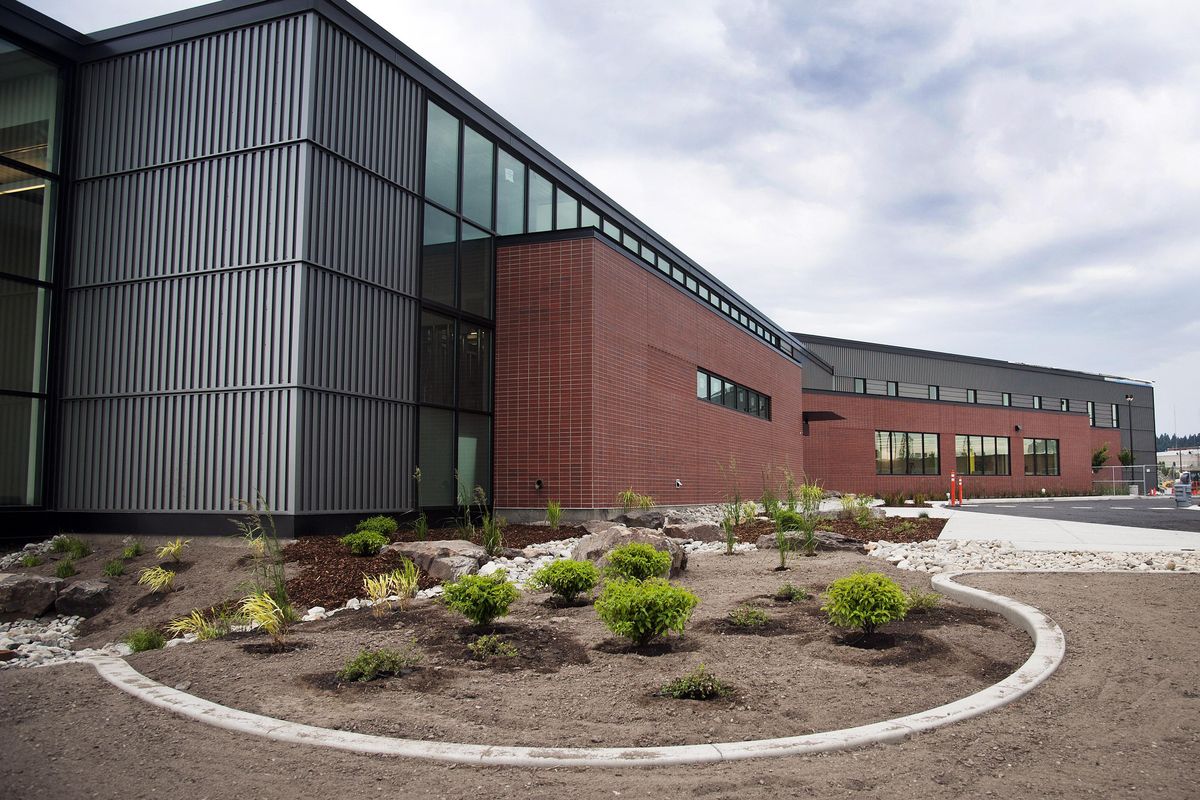New Spokane clinic called ‘the future of community health’

A group of health care providers has completed a major step toward fixing the region’s doctor shortage with the construction of a $16.2 million health clinic on the Spokane campus of Washington State University.
The two-story, 43,000-square-foot Spokane Teaching Health Center will open in August at the site of the old Peirone Produce building. According to the university, the clinic will treat more than 35,000 patients a year, serve as a training ground for medical school graduates and provide an up-close learning experience for health science students from WSU and Eastern Washington University.
The center is designed to foster collaboration and a team-based approach to overall patient care, a model that ultimately reduces costs, said Lisa Brown, the chancellor of WSU Spokane.
She called it “the future of community health.”
In 2013, WSU teamed with Providence Health Care and Empire Health Foundation to qualify for federal funding under the Affordable Care Act. They hope to boost the number of federally funded medical residencies in Eastern Washington, where there is a shortage of rural doctors.
Of the state’s existing 1,600 residency slots, just more than 100 are in Eastern Washington, according to WSU and Providence.
“Doctors are more likely to practice either where they went to medical school or where they did their residencies,” Brown said.
Residency training is the final phase of education before medical school graduates can begin practicing on their own. Most residencies last three years, but some specialties take longer.
Aided by a $900,000 federal grant, the center will focus on primary care, with about 30 residencies in family care and 30 in internal medicine. Six residents will specialize in psychiatry, two in rural family care and one in sports medicine.
Like WSU’s push to create a medical school, the center is part of a broader effort to consolidate health science programs on the Riverpoint campus and serve low-income and underinsured patients.
“It’s just like our dental and nursing clinics,” Brown said. “We’re serving people who otherwise wouldn’t have access to these services.”
Providence already operates a family care residency program at the Fifth and Browne Medical Building and will move its 41 resident physicians to the new clinic. The Fifth and Browne building will be razed to make room for a 100-bed psychiatric hospital.
Providence’s regional chief executive, Elaine Couture, said the company had difficulty paying for additional residencies until it partnered with WSU and Empire.
“We have been handcuffed by Medicare rules that have prevented us from having additional graduate medical instruction slots,” she said. “And we weren’t going to be able to keep up with growth.”
The new center will use Providence’s billing and records systems, and Providence doctors will treat patients and train residents. WSU faculty will teach students in medicine, nursing and pharmacy. And EWU will use the clinic to expand its programs in social work, physical therapy and occupational therapy.
“Each of the partnering institutions plays what I call a necessary but insufficient role,” Empire President Antony Chiang said.
Initially, about 15 percent of the center’s operating budget will come from the U.S. Health Resources and Services Administration, and the rest will come from typical health care revenue sources – patients and insurers, Chiang said. The proportion of federal funding could increase if the model proves cost-effective, he said.
The center has 56 exam rooms and an imaging room on the ground floor, and Providence is considering putting a pharmacy in a room attached to the lobby. The second floor has classrooms and conference rooms, as well as an observation area where students can watch doctors and therapists at work.
“In this environment, you’re going to see a lot of interaction, so our students and residents will get a multidisciplinary experience,” said Bob Eggart, the lead project manager.
Some spaces don’t yet have a designated use. During construction, builders added about 2,200 square feet of indoor space on the second floor. That will serve as a buffer against construction when the center expands eastward – a project still early in planning phases, Eggart said.
Dr. Judy Benson, who leads Providence’s residency programs, said what sets the center apart is the broad scope of services it will offer, from counseling to preventive care to rehabilitation. When doctors in various disciplines work in the same building, the patient benefits, she said.
“We know that the future of health care is going to be done based in teams,” she said.
WSU sold bonds to pay for construction. The university tore down the Peirone building in early 2015 and broke ground on the clinic in May. Workers now are finishing the interior.
Brown, the campus chancellor, said the center should serve as a model for American health care.
“We’re going to do things differently,” she said.